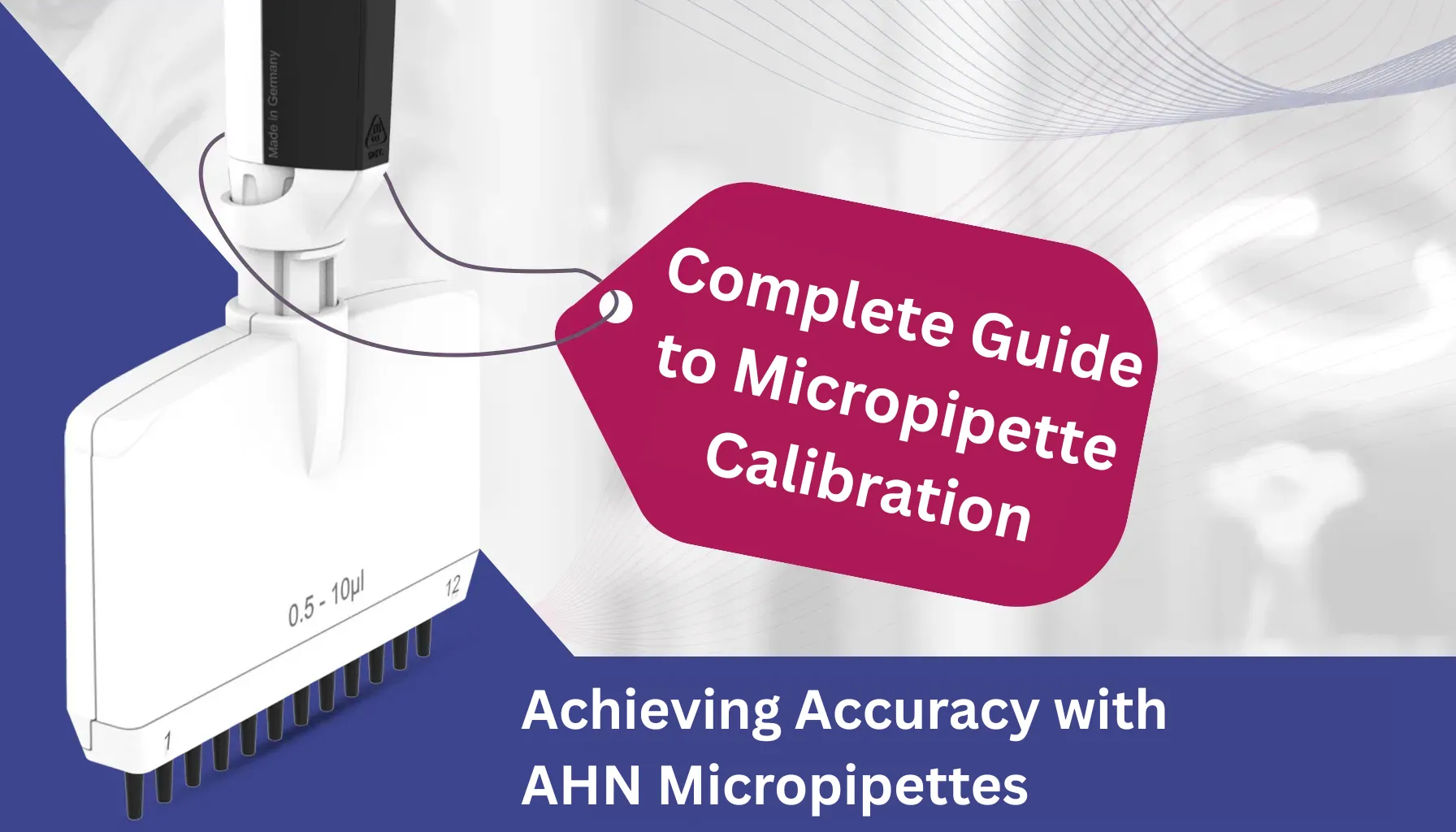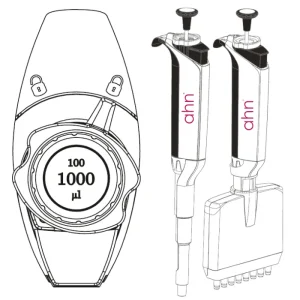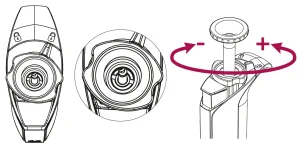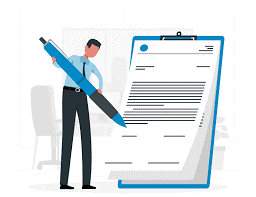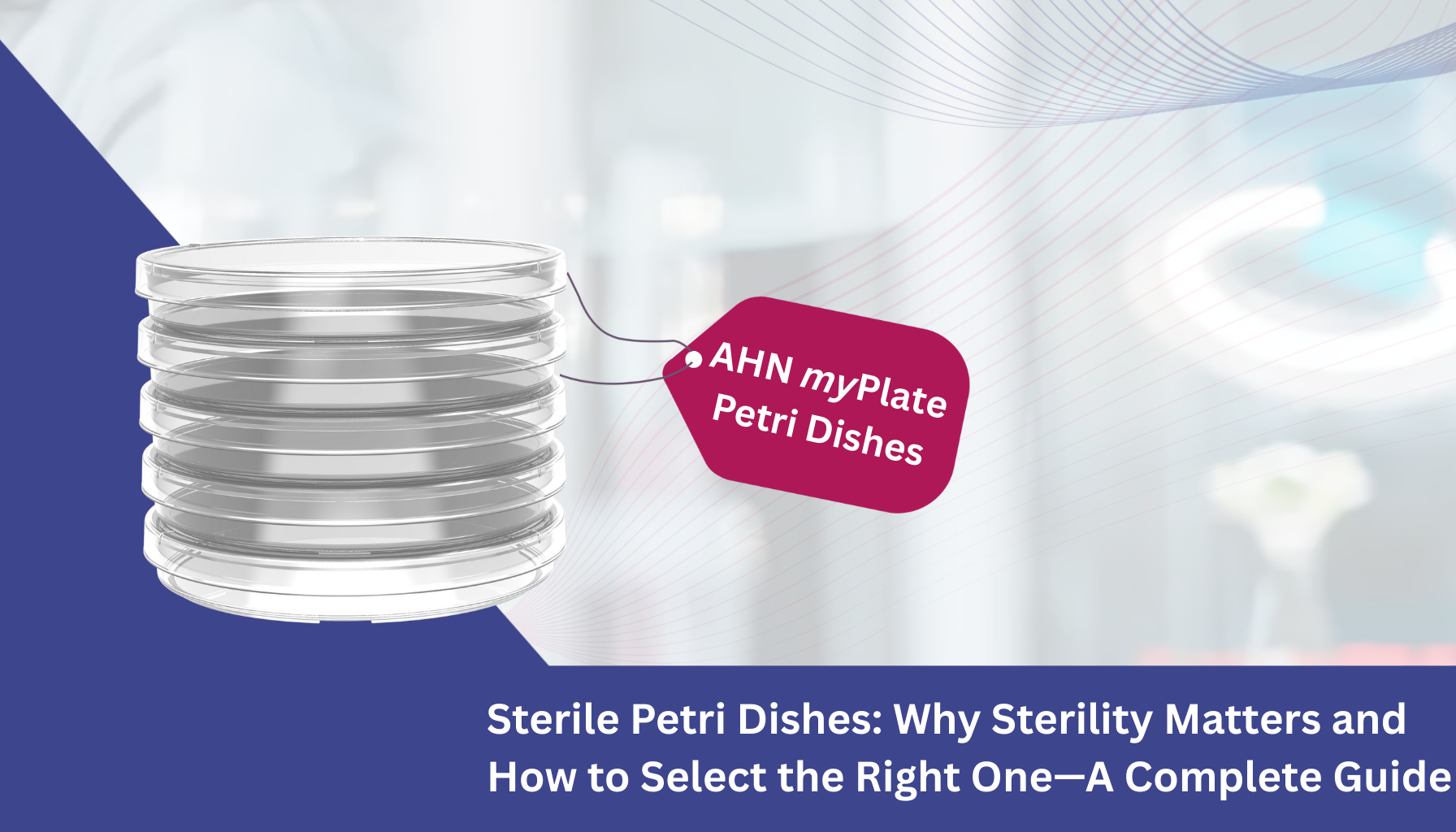In scientific research and lab work, precision is essential. Mistakes in liquid handling, no matter how minor, can ruin results when you’re preparing PCR samples running ELISAs, or working in a strict lab setting. Micropipette calibration helps avoid those errors. With AHN micropipettes, this vital task becomes simpler and more dependable.
This article covers the basics of micropipette calibration. It explains why it matters how often you should perform it, and how AHN micropipettes are designed to deliver accuracy from the start.
What Does Micropipette Calibration Mean?
Micropipette calibration means examining and fine-tuning a micropipette to make sure it delivers the right amount of liquid every time. Parts inside a micropipette can wear down because of frequent use of environmental factors, or plain old mechanical strain causing the liquid measurements to go off.
Calibrating micropipettes on a routine basis helps labs make sure the liquid volumes stay within the allowed ranges. These limits are set by standards like ISO 8655.
Why Does Micropipette Calibration Matter?
- Protecting Experiment Results:Even a tiny misstep, like a microliter off, might skew your results in precise tasks such as qPCR or HPLC. Calibrating your micropipette helps you achieve consistent and reliable outcomes every single time.
- Meeting Regulatory Standards:Labs working under rules like GLP, GMP, ISO, or FDA often need to keep proper calibration records. Micropipette makes it easier to comply by allowing quick checks and simple adjustments.
- Cutting Down on Waste:A micropipette that is off can cause you to use too much or too little of expensive samples or reagents. Keeping it calibrated reduces waste and saves money as time goes on.
- Preventing Pricey Mistakes:A single mistake from bad pipetting might slow down projects or lower product quality. Regular calibration can help avoid these problems and save costs.
How Often Should You Calibrate Your Pipette?
There isn’t a single rule for every lab. It depends on how often you use the pipette, how important your testing is, and your lab’s rules for quality checks. Here are the basic suggestions for micropipette:
| Usage Level | Recommended Calibration Interval |
| High-frequency use | Every 1–3 months |
| Moderate use | Every 3–6 months |
| Occasional or light use | Every 6–12 months |
In essential fields like clinical testing or drug manufacturing, you might need to calibrate micropipettes even more often. Labs combine this with frequent in-house performance checks.
How to Tell If Your Micropipette Needs Calibration
Think your micropipette could use some attention? Here’s what to look out for:
- Uneven sample volumes when repeating measurements
- Trouble reaching the exact volume you’re aiming for
- Liquid dripping from the tip or visible air bubbles
- The plunger feels sticky or doesn’t move
- Noticeable damage or wear on the tip cone
If these issues come up, it might be time to recalibrate or look at your lab’s micropipette upkeep process.
Complete Process for Calibration
The most popular way to calibrate a micropipette is gravimetric analysis, which checks the micropipette by weighing how much distilled water it delivers.
Step 1: Check the micropipette Before Calibration
Clean the micropipette well and make sure it is ready to use before you start. The environment must remain steady without changes in temperature or airflow.
 Step 2: Weigh Water on a Precise Balance
Step 2: Weigh Water on a Precise Balance
You need a detailed balance to measure weight. Dispense water about 10 times. Use these weights to find the actual amount of water delivered.
 Step 3: Match Results to Standards
Step 3: Match Results to Standards
The measured volumes are checked against ISO 8655 tolerance limits. Evaluations cover both systematic error (accuracy) and random error (precision).
When results go beyond acceptable limits, the micropipette undergoes adjustment with a calibration tool. Micropipette simplifies this process through external calibration mechanisms. These mechanisms avoid taking apart the device.
Step 5: Final Test and Documentation
Once adjusted, the procedure runs again to verify proper calibration. The results are written down and certified often including a calibration certificate.
Why Pick AHN Micropipette?
Calibration becomes simpler if the micropipette is designed to last, stay accurate, and require little maintenance. AHN micropipettes provide all of these benefits. Features that make calibration easier:
- Built to last: Strong chemical-resistant materials help it stay in good shape longer.
- Comfortable grip: Designed to feel easy to use during repeated tasks.
- Quick external calibration: Adjust settings without taking the micropipette apart.
- ISO-certified reliability: Each AHN micropipette undergoes testing to meet ISO 8655 standards.
- Consistent results: Delivers steady performance even after thousands of uses.
Whether you choose AHN micropipette single channel, multi-channel, or electronic micropipettes, their design limits inaccuracies and allows fast recalibration.
Conclusion
Micropipette calibration forms the core of scientific precision. With AHN micropipettes, calibrating doesn’t feel like a burden—it fits into your lab’s routine. Proper calibration supports everything from maintaining quality to meeting compliance standards influencing every area of lab work.
To keep your micropipettes lasting longer and working, pair routine checks with regular upkeep and rely on the precision design of AHN micropipettes.

